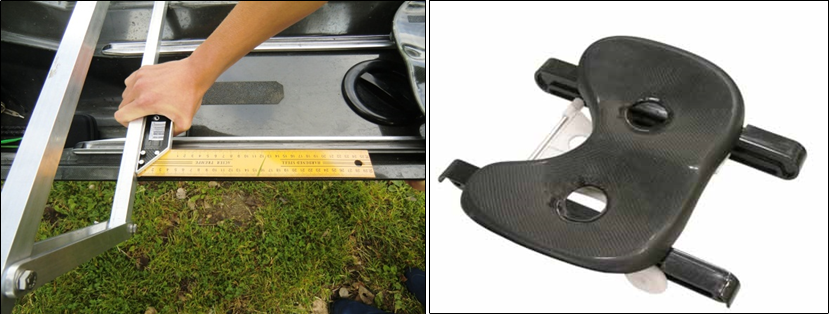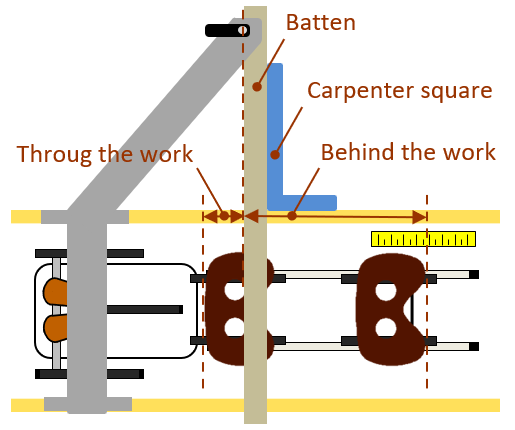| Measure: | Using a batten, a carpenter square and a tape measure. Because this distance is difficult to measure, it is useful to mark the center position of the oarlock pin with a marker, a scriber or adhesive tape on the top of the gunwale. The batten is placed over gunwales and set with a carpenter square to a 90 degrees angle. Then the whole is shifted so that one of the sides of the batten is exactly under the center of the oarlock pin. This heart position is transferred to the boat. From that point, the distance to the front stop can be precisely measured using the batten and carpenter square. The distance that the seat protrudes from the front stop must be added to this. An alternative is to measure right up to the front of the seat. |

Measuring and marking the oarlock pin heart on the gunwale
| Adjust: | There are three ways to get the rower sliding through the work more:
|
 |
Blade pitch |
 |
Distance behind the work |
This article was translated automatically and is provided to you for free. You are most welcome to improve it!













 Sliding length
Sliding length